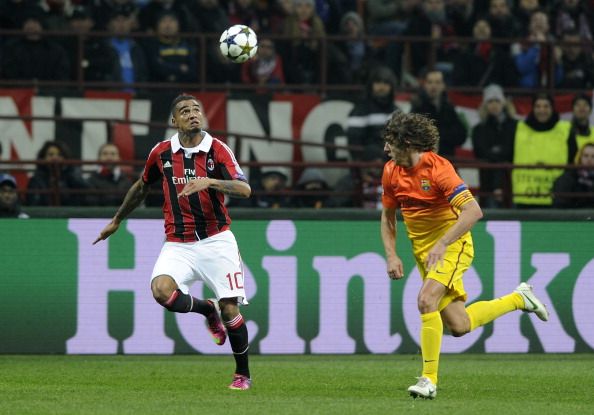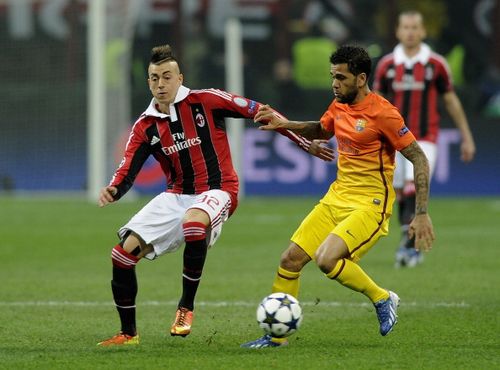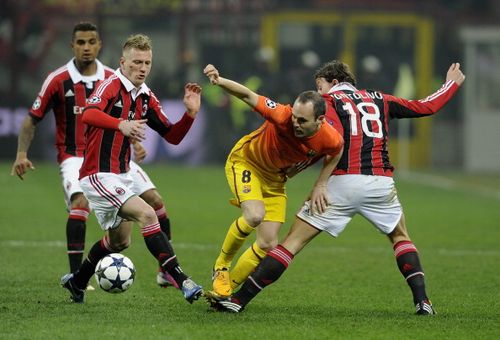
AC Milan vs Barcelona: A tactical analysis
AC Milan recorded a memorable 2 – 0 win over Barcelona at the San Siro in the first leg of the round-of-16 fixture between the two sides. It was a tactical masterpiece by Massimiliano Allegri which was perfectly executed on the pitch by a bunch of young, energetic and talented players which led to Barcelona’s demise, particularly with forgettable games for all their stars including Messi. Here are five things that were noticeable in the game, and had a major influence on its proceedings.

AC Milan took what Chelsea did against Barcelona in this tournament last season, and took it a step further with some well taken goals to boot. Where Chelsea were content to park the bus and lob the ball up the field whenever possible, Milan played actual football with the ball at their feet, after soaking up pressure from Barca. They were set up perfectly with pace down the wings, and took full advantage when provided the chance by releasing the ball down the wing, and creating all sorts of trouble for the Catalans’ full backs, who are the only source of width to Barca’s attack. Thus, a stroke of genius from Allegri, perfectly tailored to the squad at his disposal, and the main cause for their win yesterday night.

Barcelona’s plan, at least over the first half, seemed to be to try and catch Milan out by playing a high line and springing the offside trap to good effect. It was a bad idea overall, especially with the pace of Boateng and Shaarawy taken into consideration, and was proven to be so when the latter beat the trap and nearly created something for his side in the first half. Additionally, with the full backs joining in attack often to provide width to their play, Barca’s dependency on the offside trap was always meant for doom against a club with the quality of Milan.

Stephan El Shaarawy, in spite of all the praise that Boateng will garner for his performance, was the key to Milan’s victory. Running tirelessly all game, the young starlet made excellent forward runs, and kept track of Alves’ runs at the same time, only being beaten once or twice by the full back. Some vital interceptions of balls which were meant for Alves allowed Shaarawy to not only help out his defenders, but also set Milan on their way for counter attacks, making him deserving of plenty of credit for sticking to the plan put in place by Allegri.

As already mentioned twice above, the only width that was provided to Barcelona’s play was when Dani Alves and Jordi Alba surged forward from the back, making it nigh impossible to find them with the excellent tracking back from Milan. In addition, the risk of letting Milan into the gap left behind shackled the full backs, and reduced their forays to a great extent. This was quite obvious when comparing the number of times Alba got forward in the first twenty minutes or so to the number of times in the rest of the game. The introduction of Sanchez did little to change this either, with the Chilean also trying to work a more central role, and looking slightly lost overall.

Barcelona, as one person put it, were very much like a battering ram, trying to repeatedly attack through the middle, and failed miserably with every attempt. In fact, a shot from Iniesta which was from about 30 yards out and curled just wide of the far post was as close as Barca got to scoring all game. There were no other efforts from range either, and the lack of width to their play has already been highlighted above. In spite of the fact that many of their players were performing much below expected standards, the fact that Barca lacked an alternative approach either from the players on the pitch or off the bench is something that other big clubs all across Europe would have taken note of.